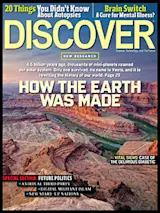When you mess with the Amazon rainforest you mess with a lot of things — 2.5 million species of insects, 40,000 species of plants, 1,300 species of birds, and those are only the known ones. The 1.4 billion of acres of thriving, sprawling biology that cover the Amazon help drive the very metabolism of a continent. And now it appears that the rainforest is at least partly responsible for something else: the Amazonian clouds themselves. Clear-cut the land and you could, in effect, clear-cut the sky.
That improbable idea comes courtesy of a paper just released in the journal Science, the product of work done by researchers at the Max Planck Institute for Chemistry in Mainz, Germany. The clouds in the Amazon, just like everywhere else, consist of water vapor clinging to tiny clumps of carbon compounds. In forested areas, the carbon compounds are byproducts of plants’ metabolism; in populated ...














